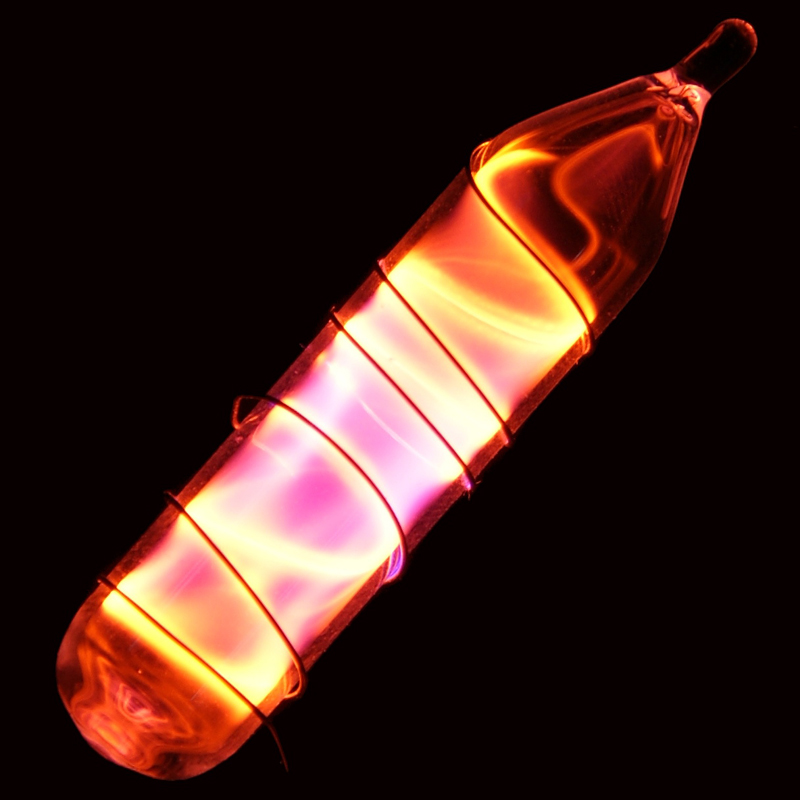Neon
10
Ne
Grupp
18
Period
2
Block
p
Protoner
Elektroner
Neutroner
10
10
10
Generella Egenskaper
Atomnummer
10
Atommassa
20,1797
Masstal
20
Kategori
Ädelgaser
Färg
Färglös
Radioaktiv
Nej
Från det grekiska ordet neos, ny
Kristallstruktur
Ytcentrerat kubiskt
Historia
Neon was discovered in 1898 by the British chemists Sir William Ramsay and Morris W. Travers in London.
It was discovered when Ramsay chilled a sample of air until it became a liquid, then warmed the liquid and captured the gases as they boiled off.
After 1902, Georges Claude's company, Air Liquide, was producing industrial quantities of neon as a byproduct of his air liquefaction business.
It was discovered when Ramsay chilled a sample of air until it became a liquid, then warmed the liquid and captured the gases as they boiled off.
After 1902, Georges Claude's company, Air Liquide, was producing industrial quantities of neon as a byproduct of his air liquefaction business.
Elektroner per skal
2, 8
Elektronkonfiguration
[He] 2s2 2p6
In a vacuum discharge tube, neon glows reddish orange
Fysikaliska Egenskaper
Aggregationstillstånd
Gasformig
Densitet
0,0008999 g/cm3
Smältpunkt
24,56 K | -248,59 °C | -415,46 °F
Kokpunkt
27,07 K | -246,08 °C | -410,94 °F
Smältvärme
0,34 kJ/mol
Ångbildningsvärme
1,75 kJ/mol
Specifik värmekapacitet
1,03 J/g·K
Förekomst i jordskorpan
3×10-7%
Förekomst i universum
0,13%

CAS-nummer
7440-01-9
PubChem CID-nummer
23935
Atomära Egenskaper
Atomradie
38 pm
Kovalent radie
58 pm
Elektronegativitet
-
Jonisationspotential
21,5645 eV
Molvolym
16,7 cm3/mol
Värmeledningsförmåga
0,000493 W/cm·K
Oxidationstillstånd
0
Användningsområden
Neon is often used in brightly lit advertising signs.
It is also used in vacuum tubes, high-voltage indicators, lightning arrestors, wave meter tubes, television tubes, and helium-neon lasers.
Liquid neon is used as a cryogenic refrigerant.
It is also used in vacuum tubes, high-voltage indicators, lightning arrestors, wave meter tubes, television tubes, and helium-neon lasers.
Liquid neon is used as a cryogenic refrigerant.
Neon is not known to be toxic
Isotoper
Stabila isotoper
20Ne, 21Ne, 22NeInstabila isotoper
16Ne, 17Ne, 18Ne, 19Ne, 23Ne, 24Ne, 25Ne, 26Ne, 27Ne, 28Ne, 29Ne, 30Ne, 31Ne, 32Ne, 33Ne, 34Ne